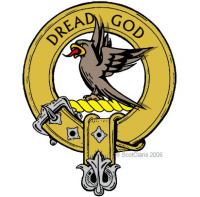
Clan Munro
The lands of the clan Munro lie on the north side of the Cromarty Firth. Known as Ferindonald from the gaelic 'Fearainn Domhnuill' or Donald's Land, this is probably a reference to the traditional founder of the clan.
The Munro clan were never known as an unduly combative family, but rather made their mark in other fields. They made a significant early contribution to Scottish traditional arts in the fifteenth century with what is probably the earliest piece of pipe music written for the Pibroch. This piece, entitled 'Blar bealach nam brog' has been attributed to one of the early Munro family.
Unlike the MacCrimmons or MacKays though, the family made little more impact in the field of the arts, but rather became known for their prominence in the Scottish clergy. The most notable Munro clergyman was the Rev. Alexander Munro, whose parish was at Cape Wrath on the very north-west tip of Scotland. He was not alone in the family in his choice of profession however, as the Munros boasted two other ministers enrolled as Justices of the Peace in Sutherland, and two in Caithness at this time.
Although in general a peaceable clan, the Munros did actively engage in continental warfare in the seventeenth century. The eighteenth chief of the clan raised a force of some 700 clansmen to join the army of Gustavus Adolphus in Sweden, where the clansmen became known as "the Invincibles".
Another notable soldier of the family was Robert Munro, who published an account of his fortunes with the MacKay regiment in the Thirty Years War. However, the most prestigious position in foreign affairs was achieved when a son of the Munro family became President of the United States of America in the nineteenth century.








